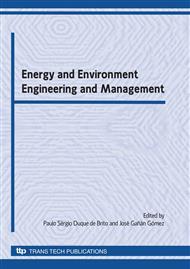[1]
J. R. Tesmer, M. Nastasi (Eds. ), Handbook of Modern Ion Beam Materials Analysis, Materials Research Society, Pittsburgh, PA (1995).
Google Scholar
[2]
G. Amsel, G. Battistig: Nucl. Instr. and Meth. B Vol. 240 (2005), p.1.
Google Scholar
[3]
J. M. Calvert, D. J. Derry, D. G. Lees: J. Phys. D: Appl. Phys. Vol. 7 (1974), p.940.
Google Scholar
[4]
P. J. Wise, Ph. D. Thesis, University of Manchester, England, (1974).
Google Scholar
[5]
P. J. Wise, D. G. Barnes, D. J. Neild, J. Phys. D: Appl. Phys. Vol. 7 (1974), p.1475.
Google Scholar
[6]
J. A. R. Pacheco de Carvalho, Ph. D. Thesis, University of Manchester, England, (1984).
Google Scholar
[7]
J. A. R. Pacheco de Carvalho, A. D. Reis: Nucl. Instr. and Meth. B Vol. 266, 10 (2008), p.2263.
Google Scholar
[8]
J. A. R. Pacheco de Carvalho, A. D. Reis: Bol. Soc. Esp. Ceram. Vol. 47, 4 (2008), p.252.
Google Scholar
[9]
N.P. Barradas, K. Arstila, G. Battistig, M. Bianconi, N. Dytlewski, C. Jeynes, E. Kótai, G. Lulli, M. Mayer, E. Rauhala, E. Szilágyi, M. Thompson: Nucl. Instr. and Meth. B Vol. 262 (2007), p.282.
DOI: 10.1016/j.nimb.2007.05.018
Google Scholar
[10]
N. Bohr: Mat. Fys. Medd. Dan. Vid. Selsk. Vol. 18, 8 (1948), p.1.
Google Scholar
[11]
J. Lindhard, M. Scharff: Mat. Fys. Medd. Dan. Vid. Selsk. Vol. 27, 15 (1953), p.1.
Google Scholar
[12]
H. H. Andersen, J. F. Ziegler, in: Hydrogen stopping powers and ranges in all elements, edited by J. F. Ziegler, volume 3 of The Stopping and Ranges of Ions in Matter, Pergamon Press Inc., Oxford (1977).
DOI: 10.1016/b978-0-08-021605-8.50012-8
Google Scholar
[13]
J. F Ziegler, in: Helium stopping powers and ranges in all elements, edited by J. F. Ziegler, volume 4 of The Stopping and Ranges of Ions in Matter, Pergamon Press Inc., Oxford (1977).
DOI: 10.1016/b978-0-08-021605-8.50016-5
Google Scholar
[14]
D. C. Santry, R. D. Werner: Nucl. Instr. and Meth., Vol. 188 (1981), p.211.
Google Scholar
[15]
C. Williamson, J. P. Boujot , J. Picard, C. E. A. Rep. Nº 3042, Centre d'Études Nucleaires de Saclay, (1966).
Google Scholar
[16]
G. Amsel, Thesis, University of Paris, Faculty of Science, Orsay, (1963).
Google Scholar
[17]
D. F. Reich, Ph. D. Thesis, University of Manchester, England, (1982).
Google Scholar
[18]
M. Huez, L. Quaglia, G. Weber, G. Amsel, Nucl. Instr. and Meth. Vol. 105 (1972), p.197.
Google Scholar
[19]
G. Debras, Thesis, Facultés Universitaires de Namur, Belgium, (1977).
Google Scholar
[20]
A. L´Hoir, C. Cohen, G. Amsel, in: Ion beam surface layer analysis- Proc. 2nd Int. Conf. Ion Beam Surf. Layer Anal., Karlsruhe, 1975, Vol. 2, p.965 (O. Meyer, G. Linker, F. Käppeler. (Eds), Plenum Press, New York (1976).
DOI: 10.1007/978-1-4615-8876-4
Google Scholar


